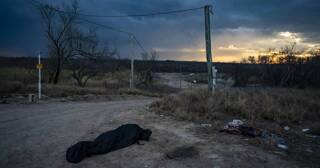Understanding Terror Networks
Here’s a very thought-provoking report from the Foreign Policy Research Institute, deconstructing the received wisdom that Islamic terrorists are impoverished and desperate: Understanding Terror Networks. (Hat tip: Bubbaman.)
The 400 terrorists on whom I’ve collected data were the ones who actually targeted the “far enemy,” the U.S., as opposed to their own governments. I wanted to limit myself for analytical purity to that group, to see if I could identify anything different from other terrorist movements, which were far more nationalistic.
Most people think that terrorism comes from poverty, broken families, ignorance, immaturity, lack of family or occupational responsibilities, weak minds susceptible to brainwashing - the sociopath, the criminals, the religious fanatic, or, in this country, some believe they’re just plain evil.
Taking these perceived root causes in turn, three quarters of my sample came from the upper or middle class. The vast majority—90 percent—came from caring, intact families. Sixty-three percent had gone to college, as compared with the 5-6 percent that’s usual for the third world. These are the best and brightest of their societies in many ways.
Al Qaeda’s members are not the Palestinian fourteen-year- olds we see on the news, but join the jihad at the average age of 26. Three-quarters were professionals or semi- professionals. They are engineers, architects, and civil engineers, mostly scientists. Very few humanities are represented, and quite surprisingly very few had any background in religion. The natural sciences predominate. Bin Laden himself is a civil engineer, Zawahiri is a physician, Mohammed Atta was, of course, an architect; and a few members are military, such as Mohammed Ibrahim Makawi, who is supposedly the head of the military committee.
Far from having no family or job responsibilities, 73 percent were married and the vast majority had children. Those who were not married were usually too young to be married. Only 13 percent were madrassa-trained and most of them come from what I call the Southeast Asian sample, the Jemaah Islamiyya (JI). They had gone to schools headed by Sungkar and Bashir. Sungkar was the head of JI; he died in 1999. His successor, Bashir, is the cleric who is being tried for the Jakarta Marriott bombing of August 2003; he is also suspected of planning the October 2002 Bali bombing.
As a psychiatrist, originally I was looking for any characteristic common to these men. But only four of the 400 men had any hint of a disorder. This is below the worldwide base rate for thought disorders. So they are as healthy as the general population. I didn’t find many personality disorders, which makes sense in that people who are antisocial usually don’t cooperate well enough with others to join groups. This is a well-organized type of terrorism: these men are not like Unabomber Ted Kaczynski, loners off planning in the woods. Loners are weeded out early on. Of the nineteen 9-11 terrorists, none had a criminal record. You could almost say that those least likely to cause harm individually are most likely to do so collectively.
There’s a lot more, and it’s all worth reading and thinking about.












